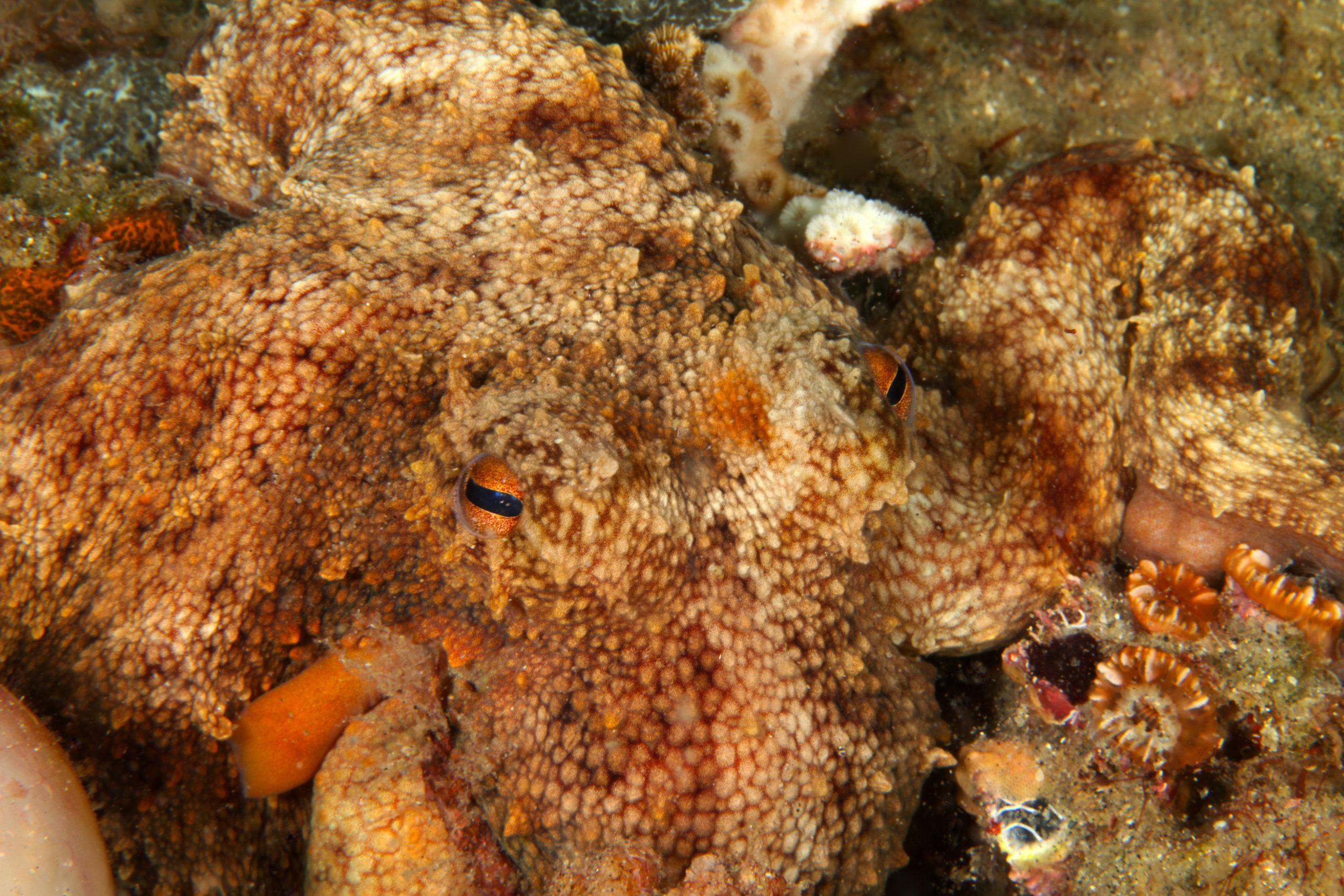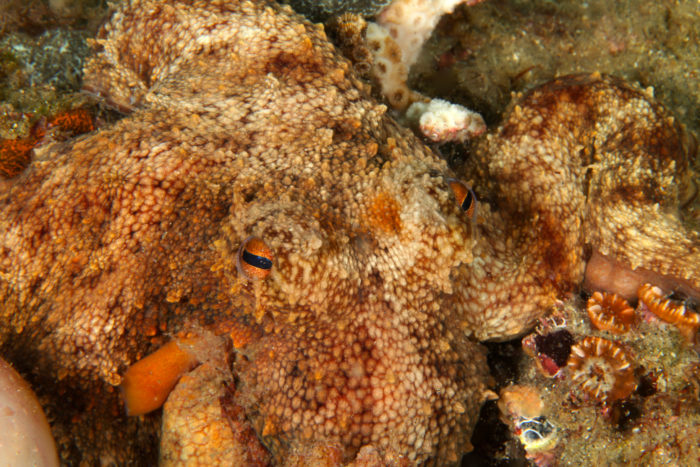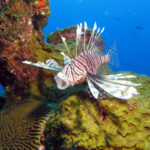
On the Defense: How Marine Animals Adapt to Survive

Photo Credit: Greg McFall
Marine environments may be beautiful and full of wonder, but it’s also a race to survive for every plant and animal that calls the ocean home. Whether predator or prey, marine species have evolved over thousands of years to adapt to their environment and food web. For predators, the goal is to be able to hide from prey and ensure their target can’t escape while prey species have adapted to defend themselves and keep on swimming.
Here are some of the most common (and coolest) defense mechanisms we see in the ocean:
Countershading: This is a permanent form of camouflage used by many species of invertebrates, fish, and even cetaceans (whales, dolphins, and porpoises). Countershading is when one side of an animal is dark and the other is light, and often includes other markings or colorations depending on the animal’s specific habitat. In the ocean, this usually means the ventral side (the belly) is lighter than the dorsal side (the back). When viewed from below, the light from the ocean’s surface and the animal’s lighter underbellies blend in. When viewed from above, the darker ocean deep hides the animal’s darker back.
An example of an animal that takes advantage of countershading in the ocean is the blue ocean slug. Its color provides it with two colors commonly found in its surrounding habitat: bright blue and silver; the blue side faces upwards, blending in with the water’s blues and the silvery underbelly faces downwards, blending in with the reflecting light from the surface.
Camouflage and color change: Some marine animals like seahorses have skin that is textured and colored to resemble their environment and allows them to blend in with their environment, escaping the notice of their predators, while other animals like octopi can use sensory receptors and proteins in their skin to change colors, patterns, or textures depending on their context.
Slime and mucus: All fish have slime layers over their scales to protect themselves from bacteria, viruses, and parasites. In some fish, the slime layer doubles as a defense mechanism against predators, secreting venom and in the mucus of the slime layer. In

Lionfish in Flower Garden Banks National Marine Sanctuary Photo Credit: Travis Sterne
the case of hagfish, the fish’s slime layer disables its attacker’s muscles, forcing the jaw to release and allowing the fish to escape.
Biological poisons: Some marine species — usually fish, reptiles, and invertebrates — produce poisons to repel threats. These toxic substances may produce a bad taste, dizziness, paralysis, or even death when consumed by or injected into the predatory animal. However, some predators have adapted to be immune to the poisons produced by their prey and some even incorporate those poisons into their own bodies for defense.
A marine animal that uses poison for defense is the lionfish, invasive to America’s ocean. These beautiful but dangerous fish have long spines along the top of their bodies that they can flare to a vertical position when threatened. Glands at the base of the spines secrete venom that, to humans, causes pain, swelling, and blistering. For other species this venom is lethal. This is why chefs who prepare lionfish meat have to carefully remove the spines and poison-secreting glands prior to cooking and consumption.
